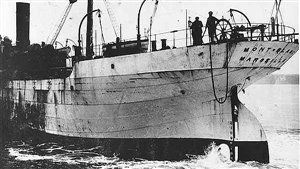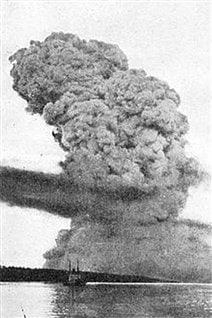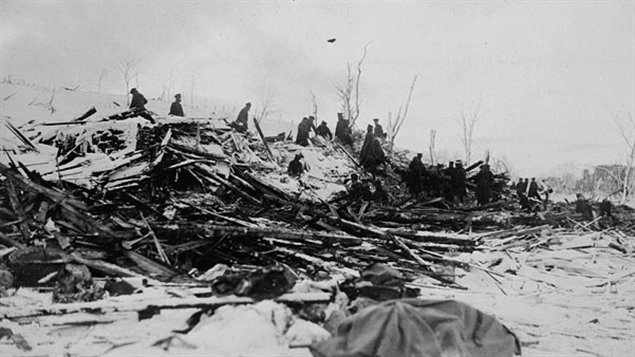December 6 will forever be known as one of the worst domestic tragedies in Canada. It remains the biggest man-made, non-nuclear explosion in history.
It was 1917, the height of the First World War and the east coast port city of Halifax, Nova Scotia was a major staging point for the war effort. The main base of the Canadian Navy, and an important army garrison, it was hive of activity with dozens of ships anchored in the harbour as others came and left with supplies, munitions and personnel.

Early in the morning of the 6th, after the anti-submarine nets at the entrance to the “narrows” were lifted, a Norwegian ship chartered by the Belgian relief Commission, began slowly moving down the harbour on its way to New York to pick up relief supplies.
At the same time a fully loaded French munitions ship, Mont Blanc made its way into the narrows up towards the harbour and its eventual station in a convoy being formed which was later to sail to Europe.
The Mont Blanc was loaded with 2,300 tons of picric acid, 200 tons of TNT, 35 tons of high octane gasoline, and 10 tons of gun cotton
The mostly empty Imo, sitting high in the water, was difficult to steer and as it moved down the harbour. It was forced toward the Dartmouth shore to avoid a ship travelling up the narrows on the wrong side, and then further toward the Dartmouth side to avoid other traffic, This put it in line with the incoming MontBlanc. Though both ships stopped engines, momentum carried them into each and the two ships collided at slow speed, but with enough impact to leave a deep gouge in the French ship.
An enormous floating bomb- on fire- abandoned, drifting to shore
It was 8;45 in the morning, as the Imo reversed out of the Mont Blanc as sparks from the grinding metal ignited spilled barrels of picric acid.

The French ship’s crew makes an attempt to put the fire out which grows quickly out of control. They hastily abandon ship knowing the danger but fail to warn anyone.
The burning ship, which should have been flying flags indicating it was full of munitions, drifts to the Halifax side of the harbor where it comes up against a pier, setting it ablaze.
People begin to gather to watch the fire of what they presumed was a simple cargo vessel.
Firefighters arrived and just as they were setting up, a blinding flash at 9;05 instantly levels most of Halifax while the tsunami created causes widespread damage across the harbor in Dartmouth.
Some 2,000 people are killed outright and 9.000 others were injured, many blinded by broken glass as they looked out windows to see the burning ship in the harbor. The shock wve even broke windows in Truro 100 km away and the shock wave was even felt and heard hundreds of kilometers further.
The rescue effort was further hampered by a bitter winter storm which arrived the following day and lasted for several days.
In terms of the combination of property damage and loss of life, it remains the worst disaster in Canadian history.







For reasons beyond our control, and for an undetermined period of time, our comment section is now closed. However, our social networks remain open to your contributions.